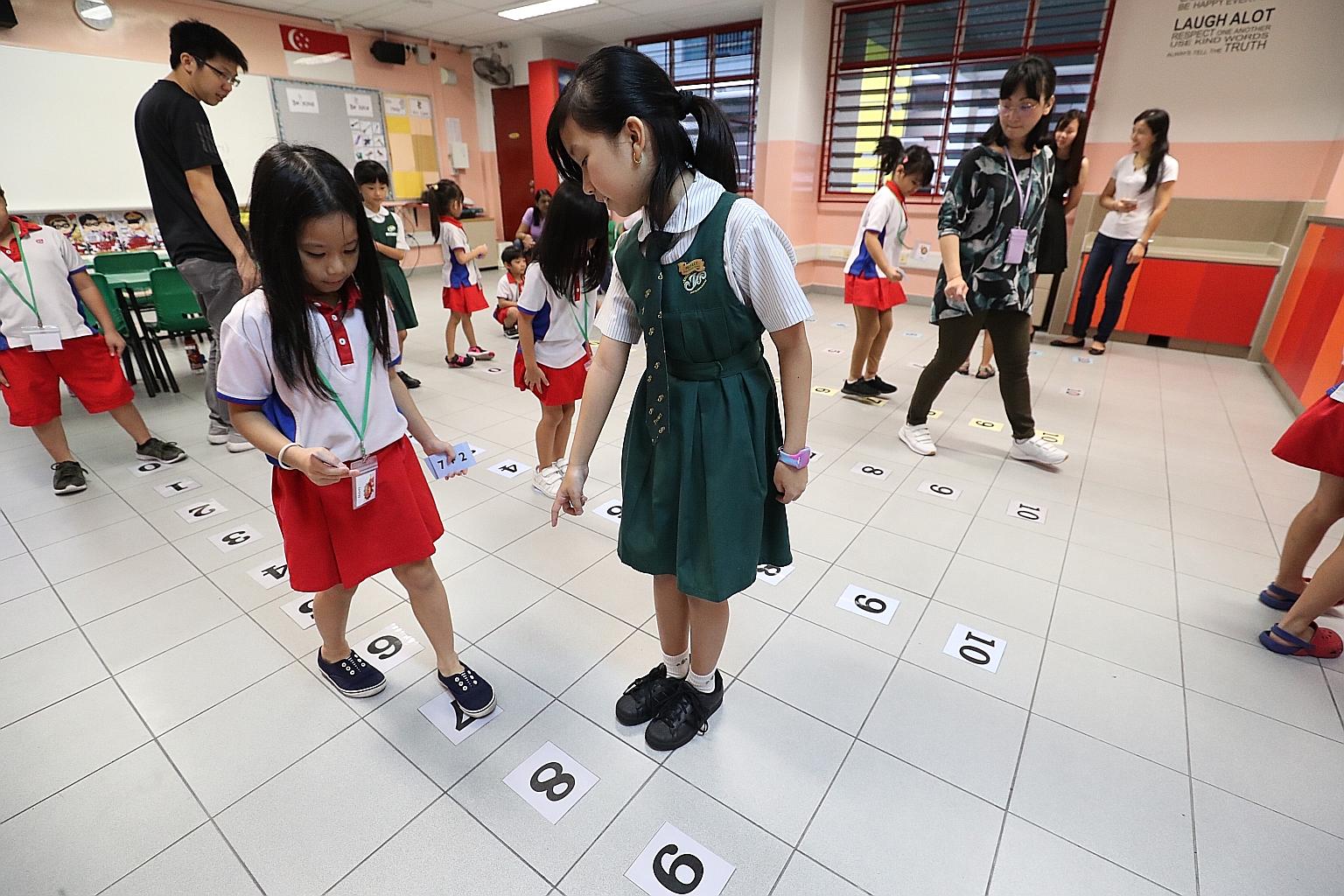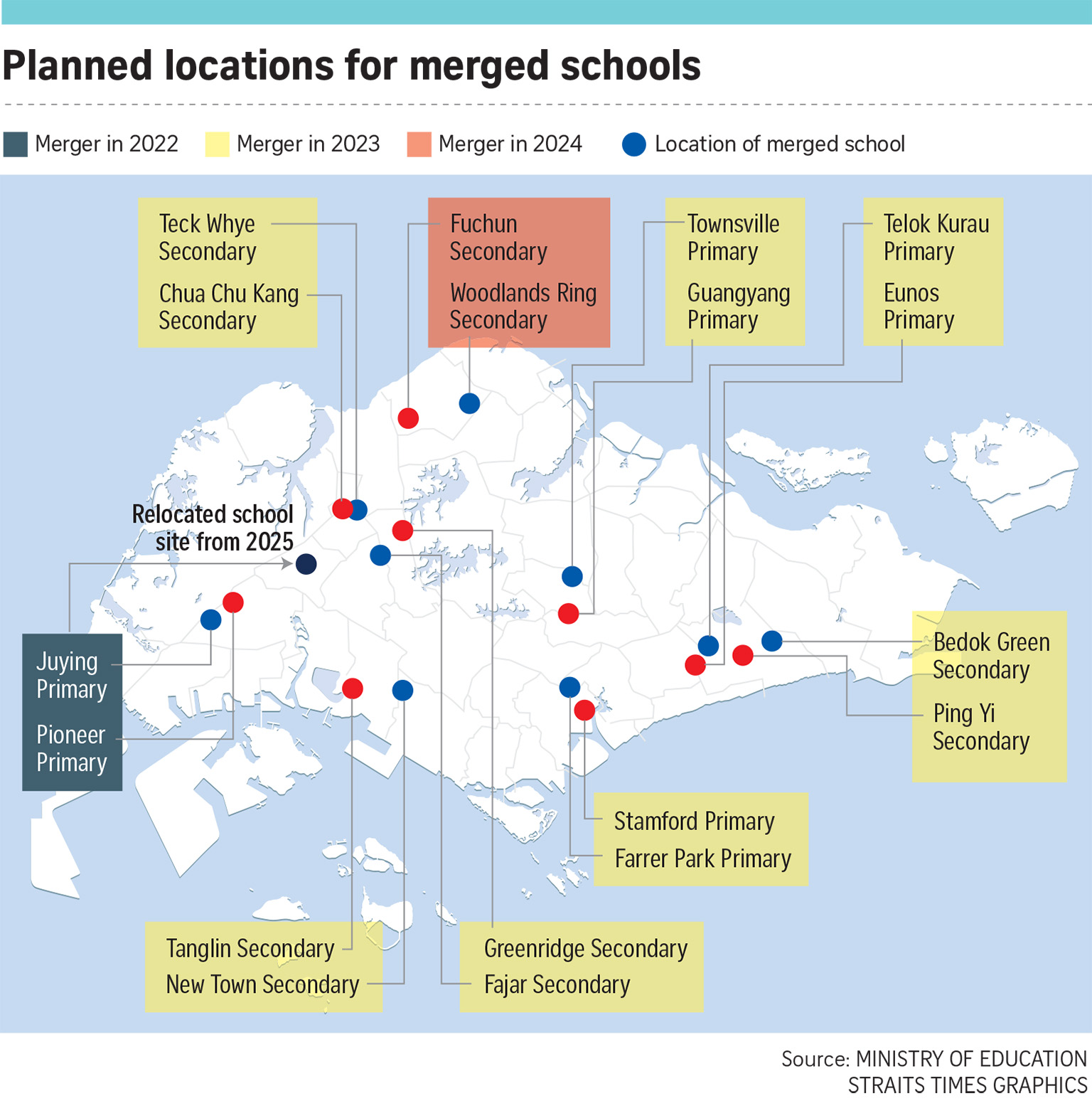Nine pairs of schools to merge amid falling births, enrolment
Mergers to take place over next 3 years, will involve eight primary schools and 10 secondary schools
Sign up now: Get ST's newsletters delivered to your inbox

A Primary 1 Open House event at Juying Primary School in 2018. The school will be merged with Pioneer Primary next year and will be relocated to a new site in the Plantation District in Tengah from January 2025.
LIANHE ZAOBAO FILE PHOTO
Follow topic:
Another 18 primary and secondary schools are set to be merged over the next three years as student enrolment continues to shrink due to Singapore's falling birth rate.
The first two schools to be merged are Juying Primary School (JYPS) and Pioneer Primary, which will be combined next year and will occupy the current JYPS site.
The two schools are being merged earlier than the rest to make way for the development of the Jurong Region Line MRT extension, said the Ministry of Education (MOE) at a briefing yesterday.
The merged school is expected to be relocated to a new site in the Plantation District in Tengah from January 2025. It will be the first primary school in the Tengah area.
The merged school will not admit new Primary 1 pupils until after it has moved to the new campus in Tengah. Existing pupils of the merged school will remain at the current JYPS campus, and the last batch of Primary 6 pupils will graduate in 2026.
Pioneer Primary principal Lee Wai Ling said that although the staff were upset at the news, they were understanding of the bigger picture.
"It's sad and difficult because we just celebrated our 25th anniversary last year, and some of the staff have been around since the school was founded, but we will do our best to help the children transition to the new environment," she said.
Another 16 schools will be merged later - 14 in 2023 and another two in 2024.
Since 2010, 68 schools have been merged, including eight junior colleges in 2019.
MOE said 23 schools have also opened over that time frame. The majority of these are primary schools in newer housing estates such as Punggol and Sengkang.
Falling birth numbers among Singapore residents play a large part in making these mergers necessary.
Last year, 38,705 babies were born, the lowest figure since 2010, when there were 37,967 births. MOE said that in the 1990s, resident live births averaged around 46,000 annually.
Many of the affected schools are in mature estates where there are fewer younger families.
"Nationally, there is a drop in the number of students but at the same time, there is an even more uneven distribution (of students) at a localised level," said an MOE spokesman.
While MOE declined to provide the specific numbers of students and staff affected, it emphasised that no MOE teachers would be retrenched due to the mergers.
Instead, they will be redeployed, possibly to teach students at other levels. MOE said there would be training support for these teachers, if necessary.
The ministry said merging the schools would allow students to continue to have a fuller school experience including varied subject combinations, co-curricular activities (CCAs) and leadership opportunities.
It said schools with low enrolment numbers find it difficult to offer a good range of programmes and CCAs, and having fewer students affects the diversity of experiences and choices the school can offer.
Planning for mergers and selecting the pair of schools revolve around four key considerations, along with local supply and demand factors, said MOE.
They are: the schools' enrolment trend, their geographical proximity to each other, the suitability of the merger partners, and the receiving school's infrastructure capacity.
Teck Whye Secondary alumnus S.V. Anand Kumar said that while he will always have fond memories of the school, the planned merger offers a good opportunity for his alma mater.
"Combining resources may allow both schools to revamp, especially as neighbourhood schools with a lot of potential," said the 25-year-old Singapore Institute of Technology student, whose sister attended Chua Chu Kang Secondary, the school that Teck Whye is set to merge with.
The names of the newly merged schools will be decided later, said MOE.
Some of the schools to be merged have had a long history that stretches back to before Singapore's independence.
Tanglin Secondary School, which officially opened in October 1964, was Singapore's first Chinese-medium technical school and was also the first to admit female students to its technical courses.
Telok Kurau Primary began life in 1926 as Telok Kurau English School. Its alumni includes founding prime minister Lee Kuan Yew.


